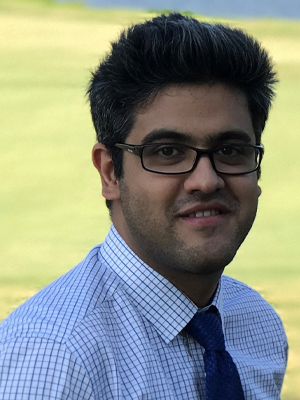
Mohammad Aghababaei, a structural engineering doctoral research assistant in the Zachry Department of Civil and Environmental Engineering at Texas A&M University, was recently awarded the O.H. Ammann Research Fellowship from the American Society of Civil Engineers (ASCE).
The fellowship is given to a member of ASCE to promote the creation of new knowledge in the field of structural engineering. This award includes a stipend for Aghababaei’s research, which focuses on recovery modeling for risk-based community resilience.
“The main objective of this research is making communities more resilient against hazards threatening their normal status,” he said. “Receiving this award is a great recognition of my efforts and research work. I feel honored by this award. I also feel the responsibility to continue working meticulously on that topic and have a major impact in the advancement of the civil/structural engineering field.”
During his doctoral studies, Aghababaei has contributed to various research projects, including developing a framework to generate recovery models for businesses in Lumberton, North Carolina, after Hurricane Matthew in 2016. He validated and calibrated an analytical approach to developing functionality fragility models using a longitudinal recovery dataset after the 2011 Joplin, Missouri, tornado. He also conducted a longitudinal field study after Hurricane Harvey in Port Aransas, Texas, to identify vulnerabilities and recovery patterns and collected time-sensitive damage data of full-scale shake table tests conducted on the world's largest shake table (E-Defense) in Miki City, Japan, using LiDAR technology.
Aghababaei, who works under the supervision of assistant professor Dr. Maria Koliou, has published five peer-reviewed journal papers, including in-press manuscripts, and presented his research at several conferences and symposiums.
"There is still a need to develop a comprehensive framework of a community encompassing all of its components and systems including households, businesses, lifelines and other main components, considering the engineering and social attributes of the recovery to make quantitative decisions to enhance the community's resilience," he said. "The frequency of natural disasters in the U.S. has increased in the past few decades, and people are suffering from the direct consequences of such disasters and long periods of recovery in their aftermath."
Aghababaei was part of a team that conducted a field study one month after Hurricane Harvey.
"I observed closely how difficult living in the affected communities was," he said. "As an engineer, I believe I am doing my part by using my expertise through this research to address such difficulties and problems of today's societies. Additionally, as a student, this research is one of the state-of-the-art research areas within civil engineering, and it definitely strengthens my background for my future career."
After finishing his doctorate, Aghababaei plans to continue his professional career in a research-oriented position in either academia or the civil engineering industry.